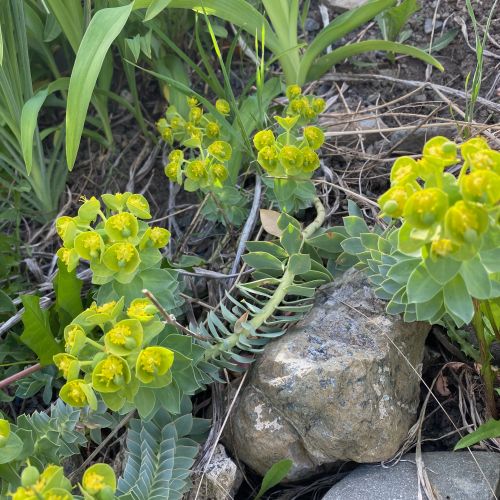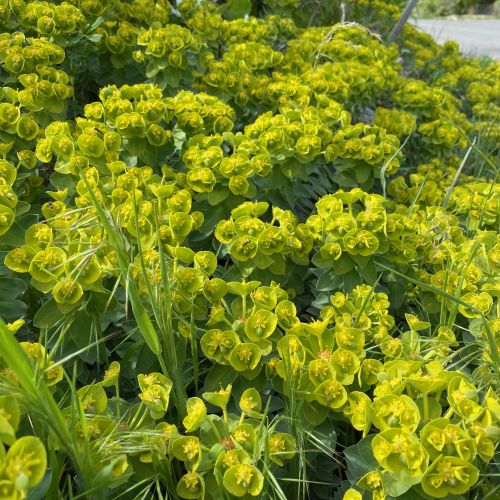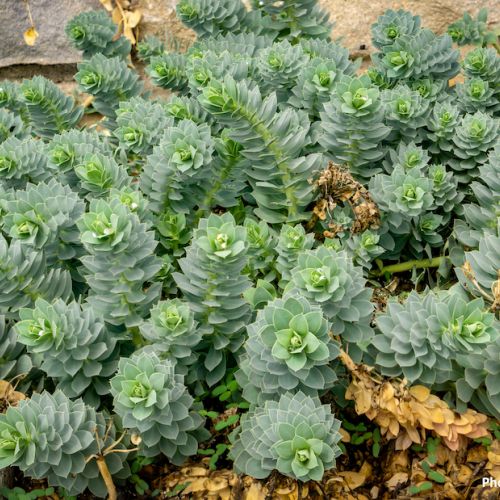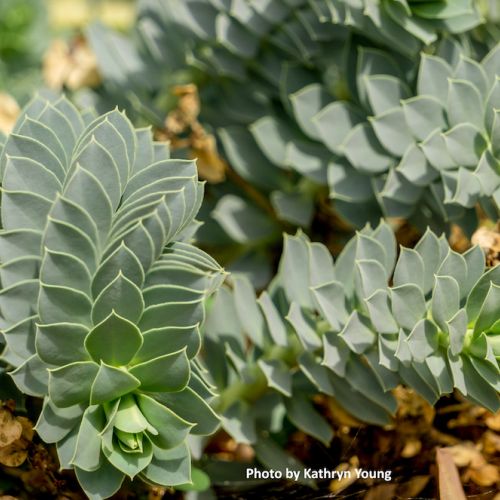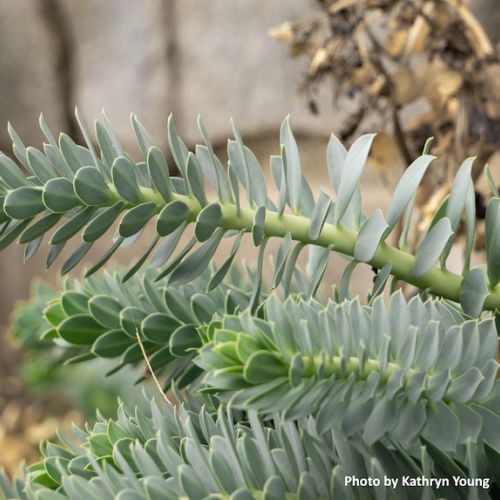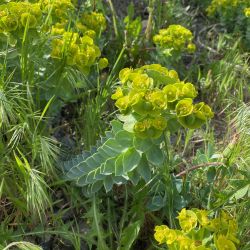
General: Popular garden, perennial succulent that spread easily. Leaves, roots and stems all contain a milky sap that can be an irritant to skin causing itching, burns and blistering.
Height: Grows between 10-15 cm tall.
Flowers: Small flowers that are surrounded by yellow-green flower-like bracts.
Leaves/Stems: Leaves are fleshy, blue-green in colour and are arranged around the stem in a spiral pattern. They are 1-2cm long.
Root: Branching, fine roots
Myrtle spurge, creeping spurge, wolf’s milk
Leafy & Cypress spurge are 2 another invasive plants in the same genus but they are do not have succulent leaves. This is the main and obvious difference.
Autumn Joy stonecrop (Hylotelephium telephium) is a garden succulent but this plant has larger leaves, a pink cluster of flowers and flowers in August to October. (Autumn Joy Information)
Where did it come from? Donkey-tail spurge is native to southeastern Europe and Asia Minor.
Where does it grow here? It grows in very dry, hot conditions and prefers well-drained soils. It grows well in gravel soild, rock gardens and disturbed areas.
Reproduction: Spreads primarily by seed but can also spread by roots and cuttings. The seeds are projected up to 5m when the pod dries and bursts. The seed can remain viable in the soil for up to 8 years.
When does it grow, flower & seed? Flowers bloom between April & May. It produces seed soon after it flowers.
Spreads By: Garden stores can still sell this plant. Gardeners will also give this plant away to other gardeners.
Plant Type: Perennial
- Milky sap in leaves, stem and roots is toxic to humans and animals. If this sap gets on human skin, it can cause irritation, swelling, rashes, burns and blisters. USE GLOVES, protective clothing and glasses when removing.
- Due to the seed pod bursts, the seeds can be projected up to 5m away and aggressively spread.
- It will outcompete native and garden plants.
- The roots will release chemicals into the soil to prevent other plants from growing nearby.
- Review your property & garden regularly for this plant.
- Treatment Remove small patches before it flowers & sets seed.
- Cover bare patches or disturbed soil by planting or seeding with non-invasives.
- Check areas where you have removed invasives for any new plants that year and in future growing seasons.
- Dispose of invasive plants responsibly. Bag them for disposal at the local landfill. Composting and burning are not recommended.
- Contact LRISS for specific treatment recommendations.
Photo Gallery
